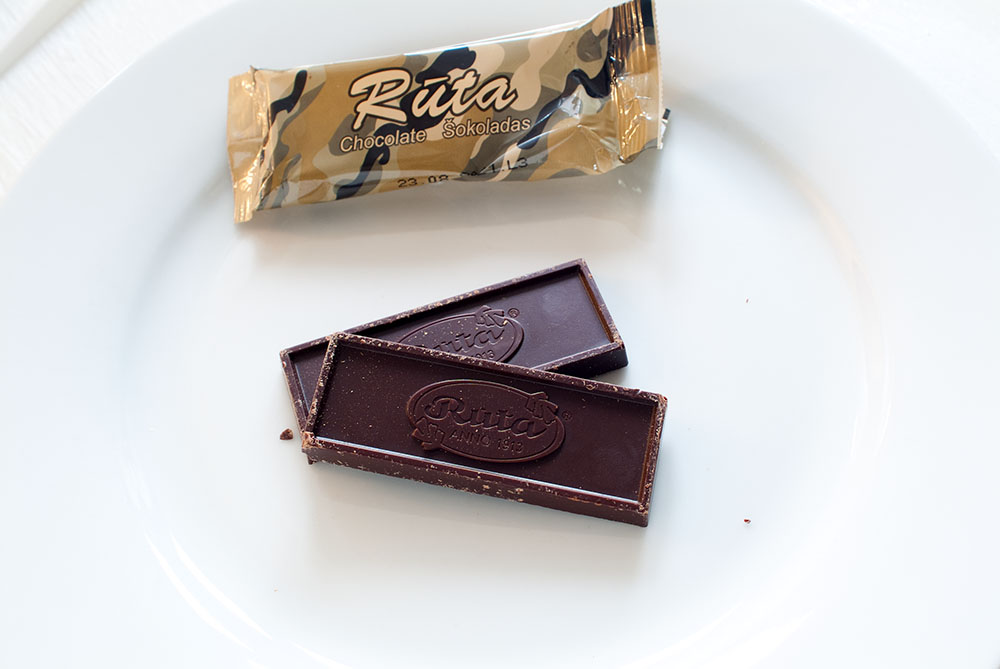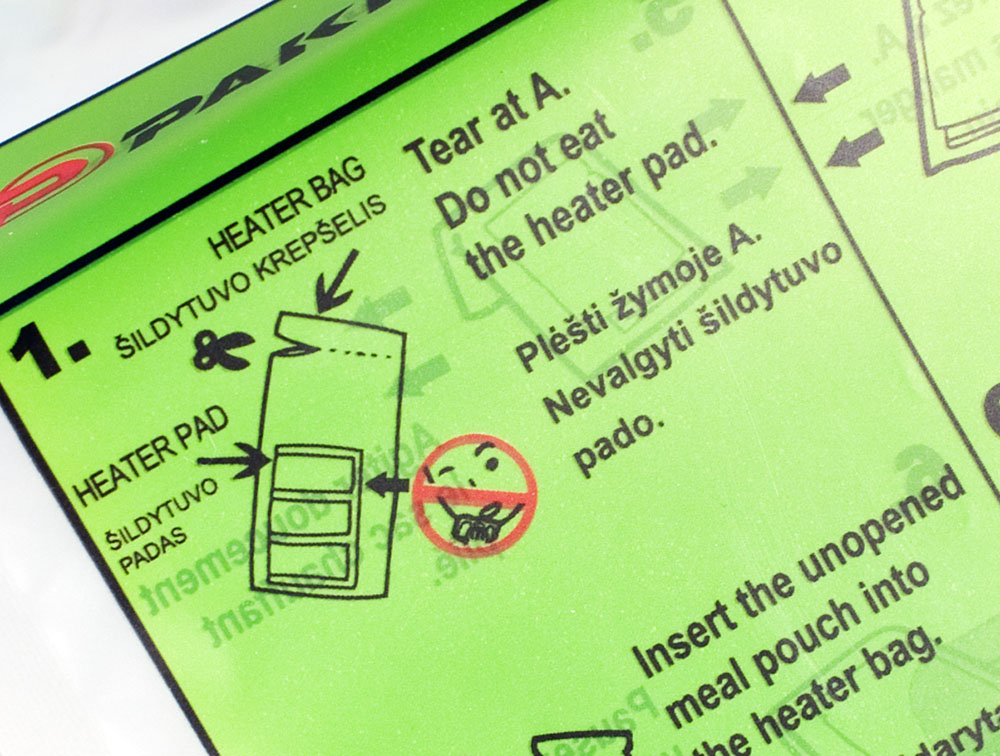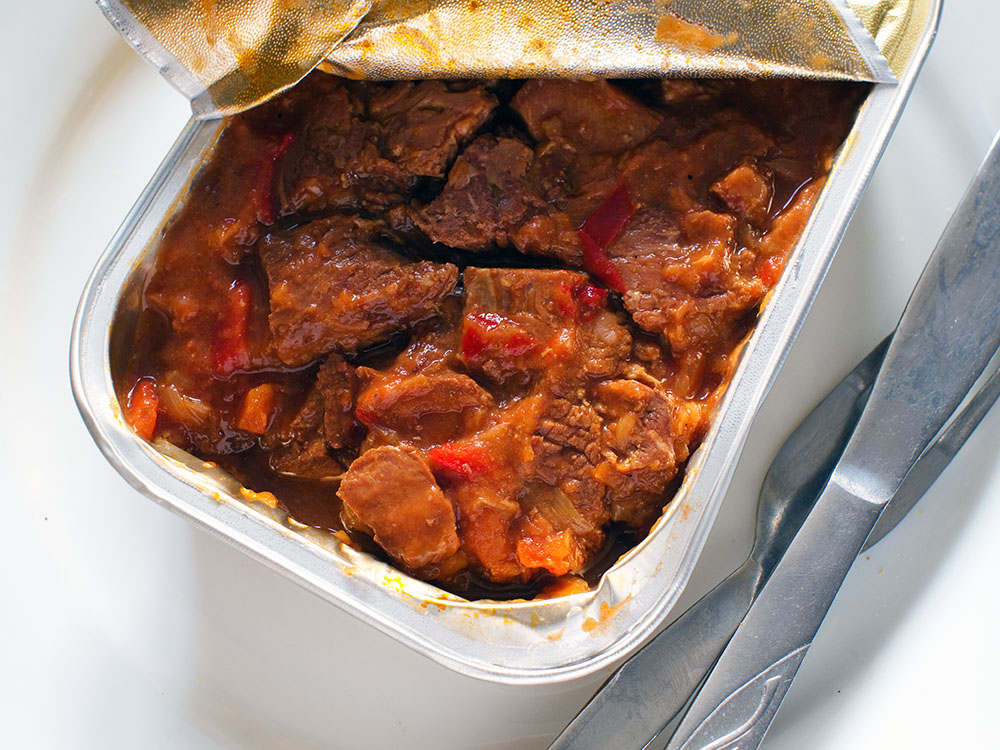Let's have a look at another MRE. This one is Lithuanian. It's Variantas Number 2: Stewed Beef with Groats in Sauce. It comes with hazelnuts, honey, orange juice, coffee, and two packets of rock-hard Polish SU-1 crackers, viz:
And a plastic spoon, some matches, some hexy fuel tabs, and a tiny hexy stove. The plastic spoon feels much more flimsy than US MRE spoons, but in its favour it has a sharper edge, which cuts through food more easily.
To paraphrase the Pet Shop Boys, I never thought I'd get to be the creature I was meant to be, but I hoped, in spite of dreams, I wouldn't end up writing about plastic spoons. But here we are.
Lithuanian MREs are made in Poland for the Lithuanian armed forces, which is why they resemble Polish MREs. I've tried a couple of Polish MREs, the SR-1 and SR-4, and they're really good. The main meal is meaty and filling. Lithuanian MREs are similar on a conceptual level - a tray of meat stew plus extras - but they're not as good. Less meat, slightly fewer extras.
Compared to an American MRE the Lithuanian variety is simpler. American MREs have a relatively small main meal, plus a sub-main-meal, plus a variety of accessories, designed so that you can mix the elements together in several different ways, but Lithuanian and Polish MREs are much more inflexible. You can smash the crackers into bits and put them in the main meal, but that's about as much as you can do in terms of culinary expression.
Here's what the hexy stove looks like, and bear in mind that if I was cooking the beans I would open the lid:
In my experience one tab is enough to boil a can of beans plus a can of water for coffee. Airlines don't allow the carriage of hexy tabs, so if you plan to take a Lithuanian MRE abroad you'll have to take out the tabs first. I mention this because, if all goes well, I will be tramping across [redacted] in a few months, and I thought about taking the hexy tabs as a backup in case I couldn't find fuel for my Trangia stove, but alas I can't.
In theory hexy tabs are great. They're lightweight and burn away, leaving behind no waste. In practice they smell, they cover everything in smokey residue, and they give off a lot of carbon monoxide, so if you're going to use one indoors make sure to open all the windows first. But enough of hexy tabs, let's tuck in:
Firstly the chocolate, which is perfectly acceptable dark chocolate made by Ruta of Lithuania. It's indistinguishable from good-quality store-bought chocolate. The camo packaging is a nice touch.
I'm no coffee connoisseur. I'm British. I can only detect two types of coffee - hard, and soft. This was softer than MRE-style coffee. You don't get creamer, so I added a bit of milk. That might have taken off some of the edge.
The hazelnuts are hazelnuts. They're dry and there are lots of them, so I assume they're added as a cheap way of filling space.
Now it's time to start cooking the main meal. The flameless ration heater is super-effective. When I added water the heating element immediately swelled up and started giving off steam. It was frightening!
I wouldn't ordinarily think of eating a heating pad, but perhaps everyday life in the Lithuanian armed forces is so boring that the soldiers will do anything to amuse themselves. What if you wrapped one around your penis and poured water on it? The packaging doesn't warn against that.
I imagine that your penis would swell up, but not in a happy way.
While the main meal is cooking, let's try out the Polish SU-1 crackers. Rusks. Crackers. Hardtack. Rusks. They're legendary:
They have an unusual taste, apparently a result of caraway seeds. Slightly aniseed, but not so much that it's off-putting. Within a few bites you stop noticing it. The crackers are surprisingly clever. They take up little space; they keep forever; it takes a long time to eat them, so they feel more substantial than they are; you can eat them raw, or with the honey, or crush them up into the main meal.
You have to break them into bits with your hands first before eating them. They're far too tough to bite apart with your teeth. Your teeth would break first. Dunking is futile. Here's a shot of the crackers broken into bits, taken from an earlier article about a Polish MRE, which includes a little tin of meat:
Why are the colours different? Different camera, different lighting. At this point the main meal has cooked. Let's have a look:
Lithuanian MRE menus seem to change fairly regularly - most online sources say that menu two is chicken stew with an apple drink, but as you can see this brand-new-for-2019 menu is beef.
It's better than it looks, and bear in mind that what appears to be globs of fat are in fact groats. What are groats? They're coins, aren't they? From long ago? From Scotland? I don't know. I learn from the internet that groats are a form of wheatgrain, which makes a lot more sense. I can't imagine eating coins. It wouldn't help you go through an airport metal detector. They'd take you into a back room and pump you full of food until the coins came out the other end.
But perhaps you could use that to your advantage, if e.g. you were very hungry, but let's talk about the MRE. It's essentially a weak meaty stew. There's nothing wrong with it but it's insubstantial. The groats at least give it some variety, but it really needs a couple of slices of bread or some potatoes etc. As with a lot of MRE main courses it would be great dumped onto a plate of chips.
Compare it with the main meal from a Polish MRE, which has a much denser meat payload:
Not so much a meal as a statement. It dares you to adulterate it. It dares you to spurn or mock the power of meat. Meat Payload would be a good name for a heavy metal album. Which reminds me, there's one thing left, the orange juice:
Unfortunately I added too much water, so the end result was very thin. I imagine that with the correct ratio it just tastes of cheap orange juice.
Lithuanian MREs are widely available here in the UK, less so overseas. The country reintroduced conscription in 2015 but the military has not been engaged abroad since then, which is presumably why so many MREs are available on eBay and the like - my guess, and I admit this is a guess, is that Lithuanian soldiers mostly eat from field canteens or the mess hall, but the armed forces are compelled to procure lots of MREs "just in case", so they end up with masses of meals left over. Does that sound plausible?
As with all military meals Lithuanian MREs are of limited practical use on the civilian market. You can replicate the contents at home with a nutty chocolate bar, some biscuits, 3-in-one coffee, and a tin of stew. For long-distance hiking they're too bulky, and as a morale-booster the lack of variety would get depressing after a while. My hunch is that they keep for longer than US MREs - nuts, crackers, honey, and dark chocolate last forever - but then again rice and dried food stores even longer, and takes up less space. They are of course a fun novelty, and perhaps you are tired of Pot Noodles and Kendal Mint Cake.
And with that, dear reader, I will leave you to your own devices. You be good. I love you. See you tomorrow.



















